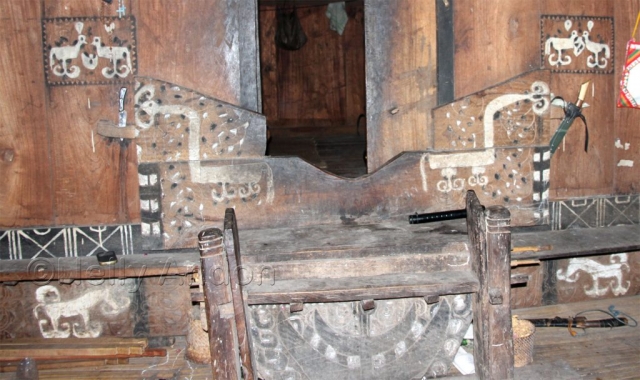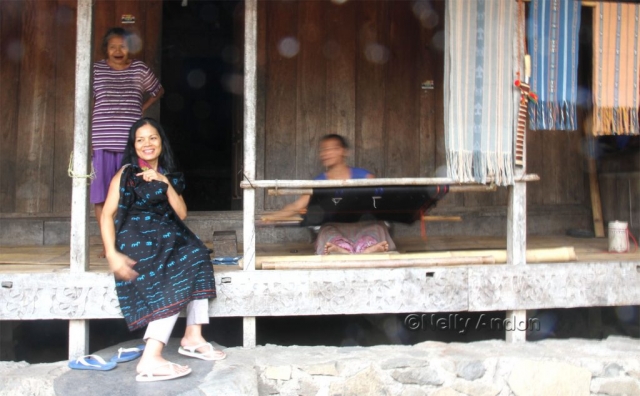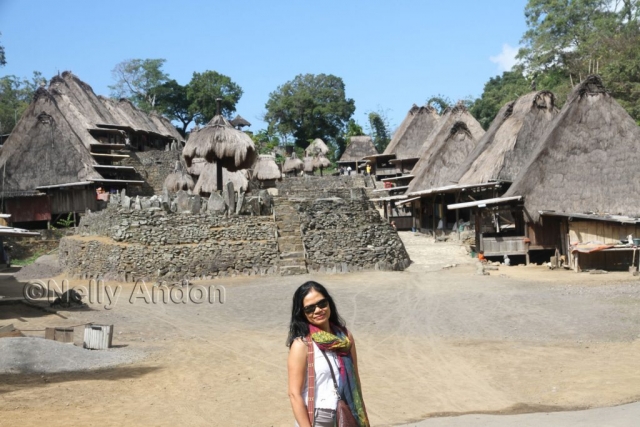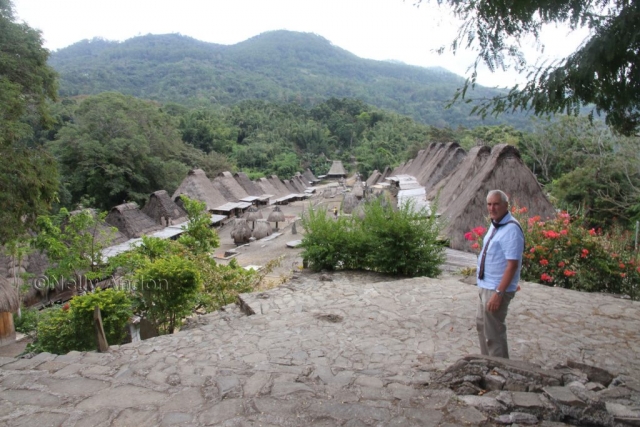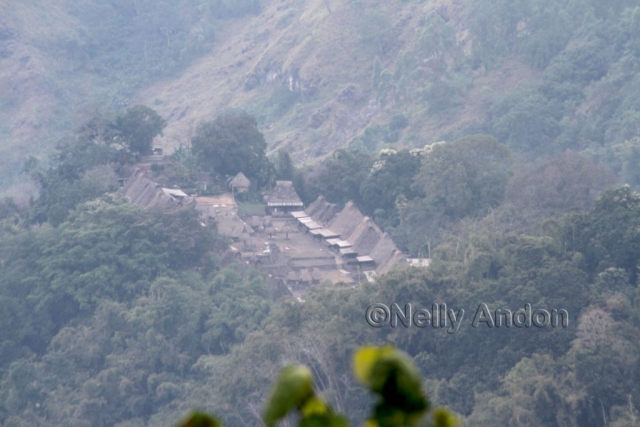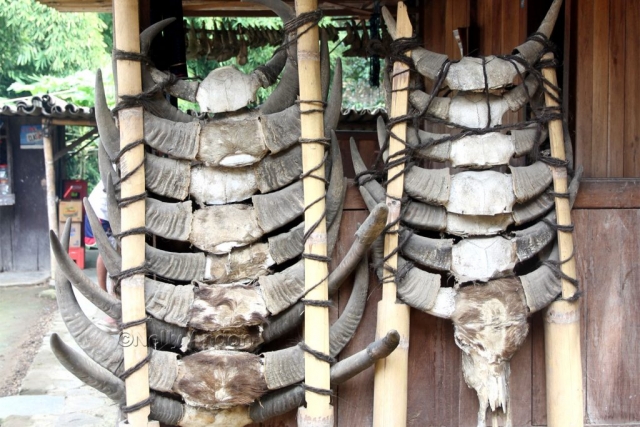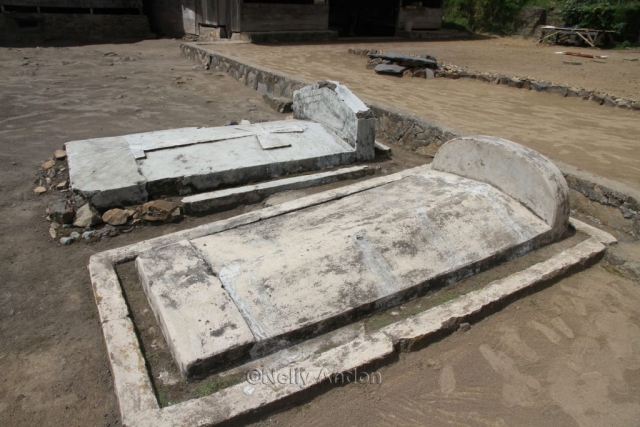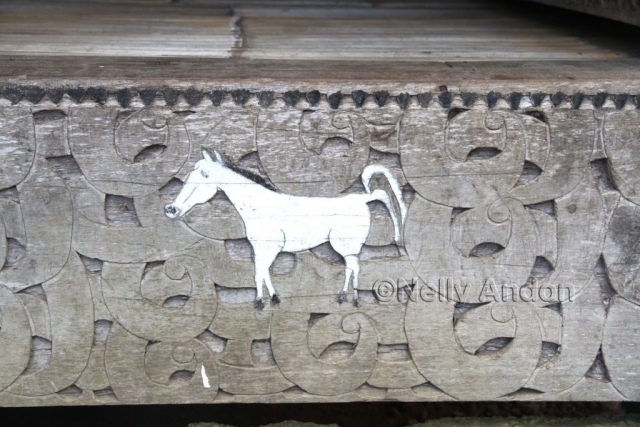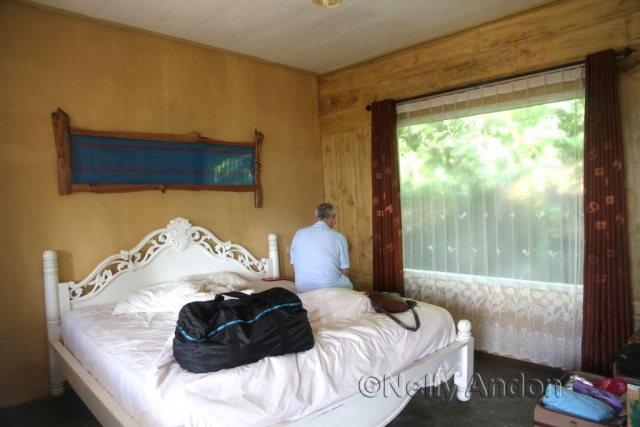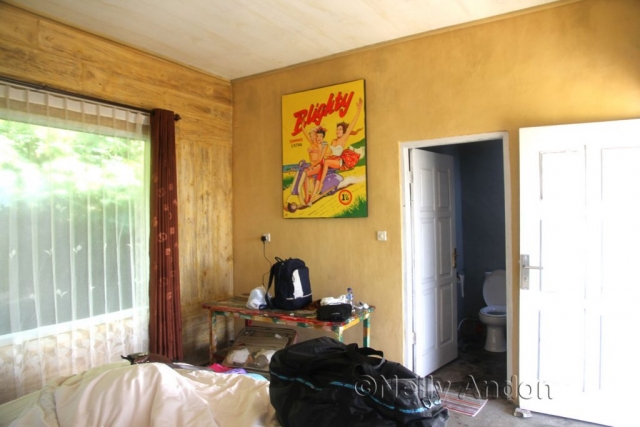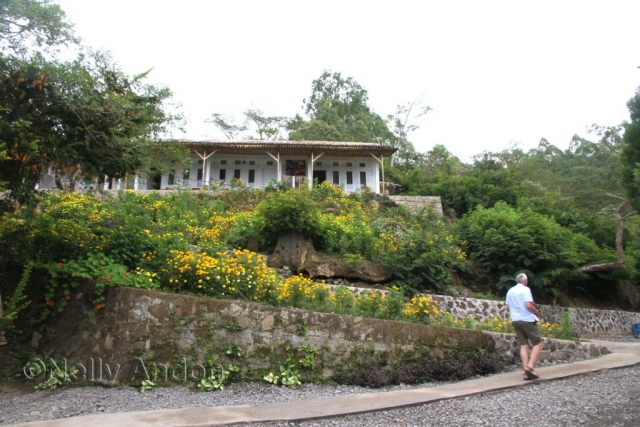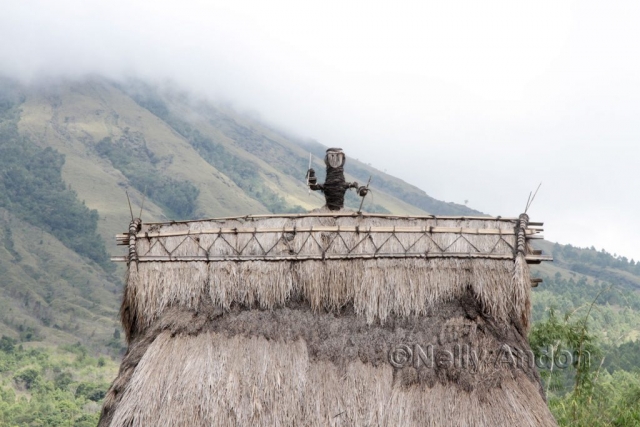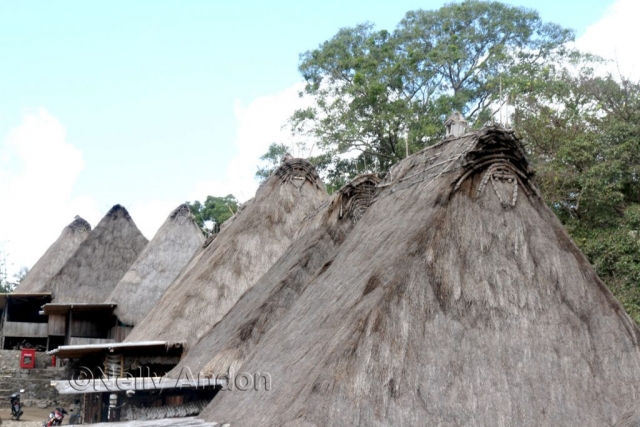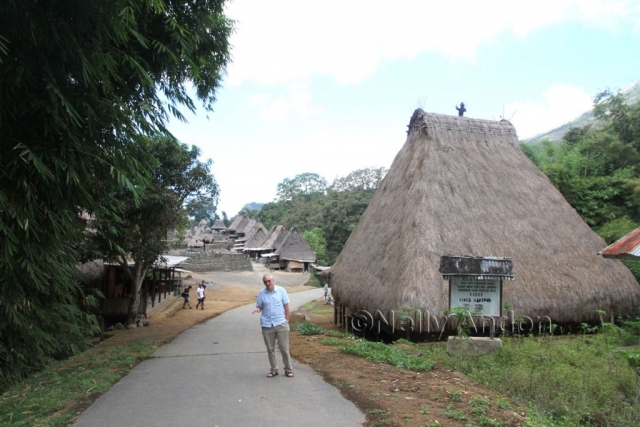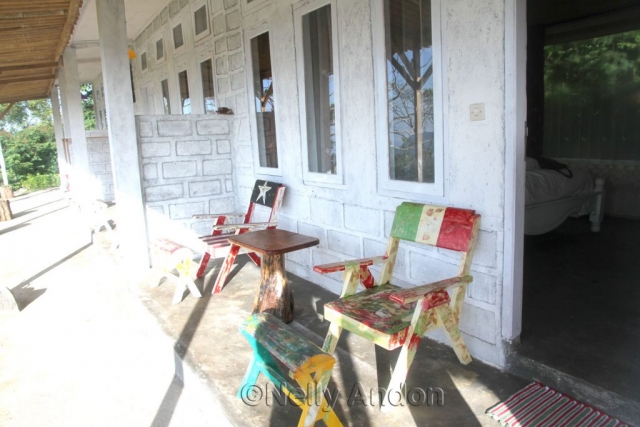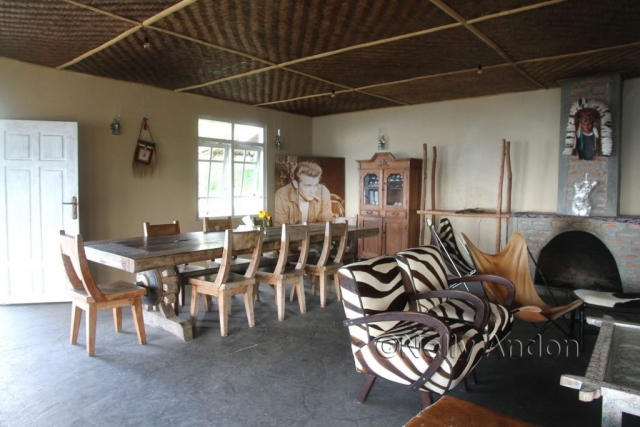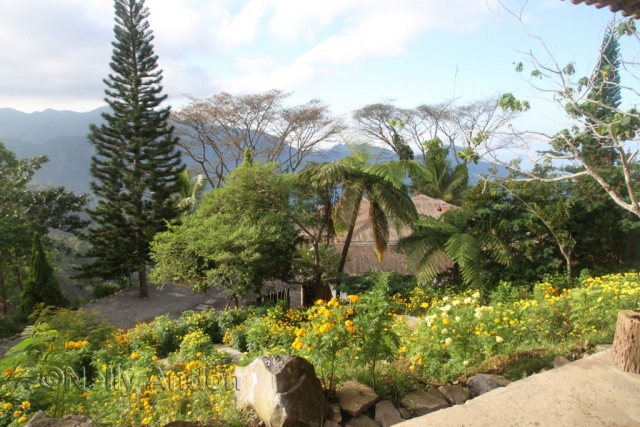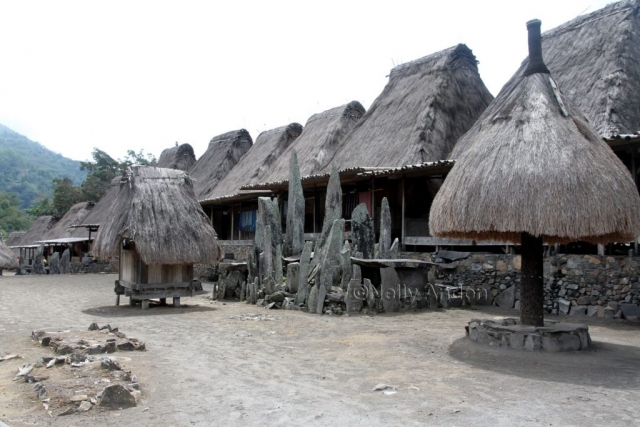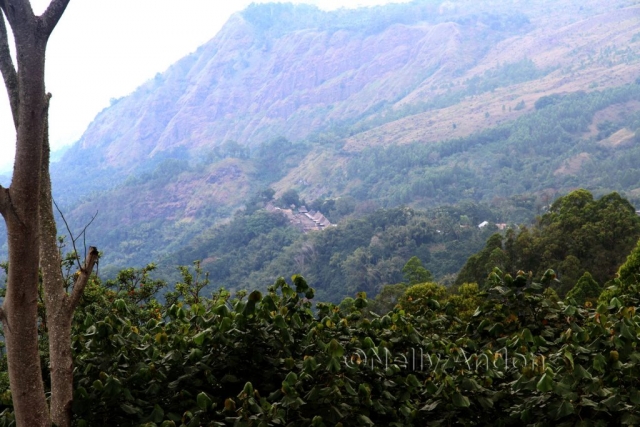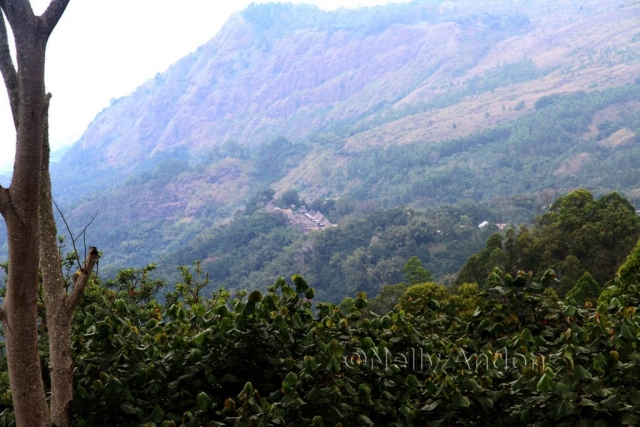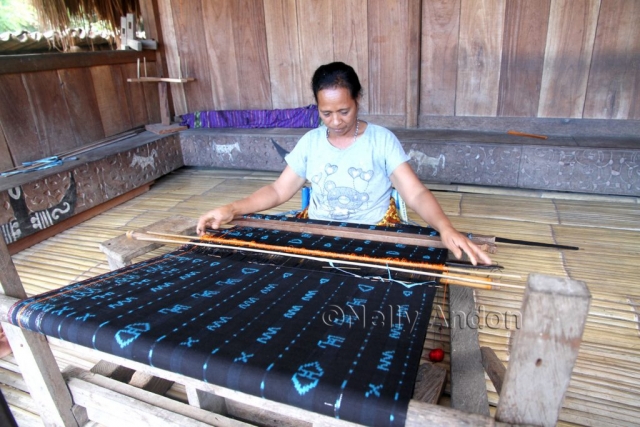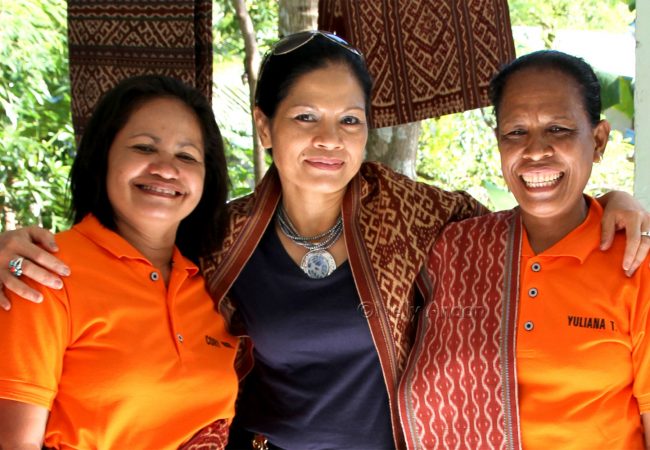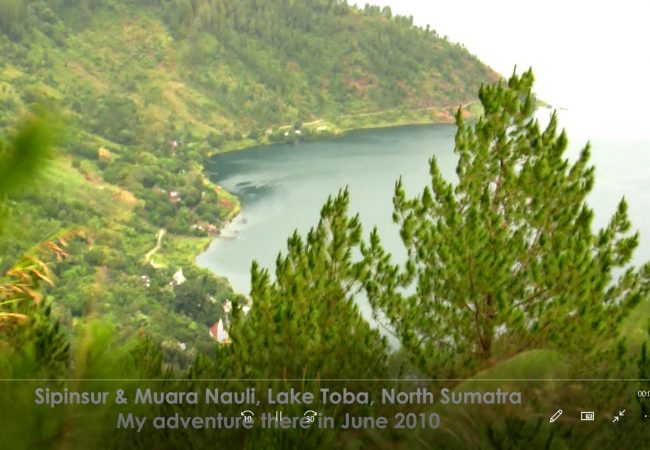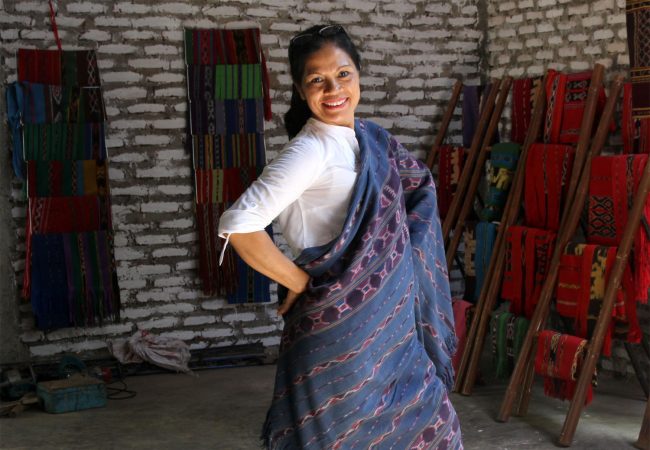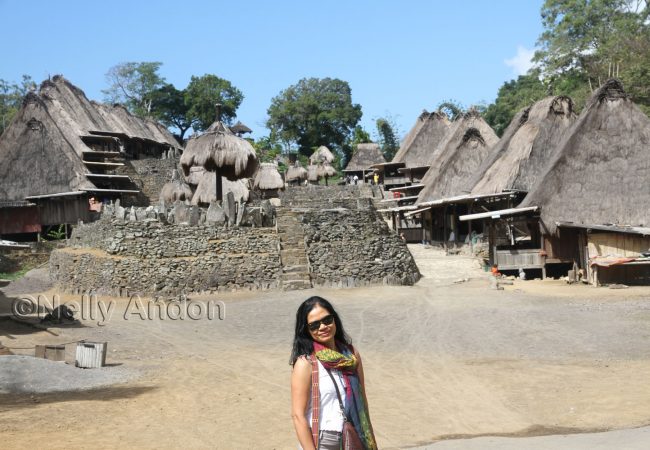
A day in Bena Village, Ngada Region of Flores, East Nusa Tenggara
We left the Manggarai region with amazing memories in our minds. So much we need to celebrate on the beauty of the part of Flores we left behind, but some things have left me with unanswered questions in my mind. Our next destination is Bena Village, it took us a few hours solid driving to get there from Ruteng. Weeks prior to this visit, I have booked our hotel room at the Manulalu, a small fairly well-known hotel, very high up on the hill above Bena Village. The hotel is very quirky and used regularly by tour operators in Flores. The drive up to this hotel was very dark, with no street lights, pass winding mountain roads. We couldn’t really see anything outside on our way up there, it was a little bit worrying about our safety. I have booked the hotel room via Whatsapp message directly with the owner, but on the night of our stay, the lady didn’t respond to my messages, and I did get very worried. We got to Manulalu very late in the evening, and the hotel was closed. The reception told me that the owner was on holiday in Yogyakarta in Java, where she apparently spends a lot of time during the year. What was more worrying, that the receptionist couldn’t locate my booking, and the owner had forgotten to notify her staff. Thank goodness for email technology, that I had all her emails on my android tablet confirmation of all my booking.
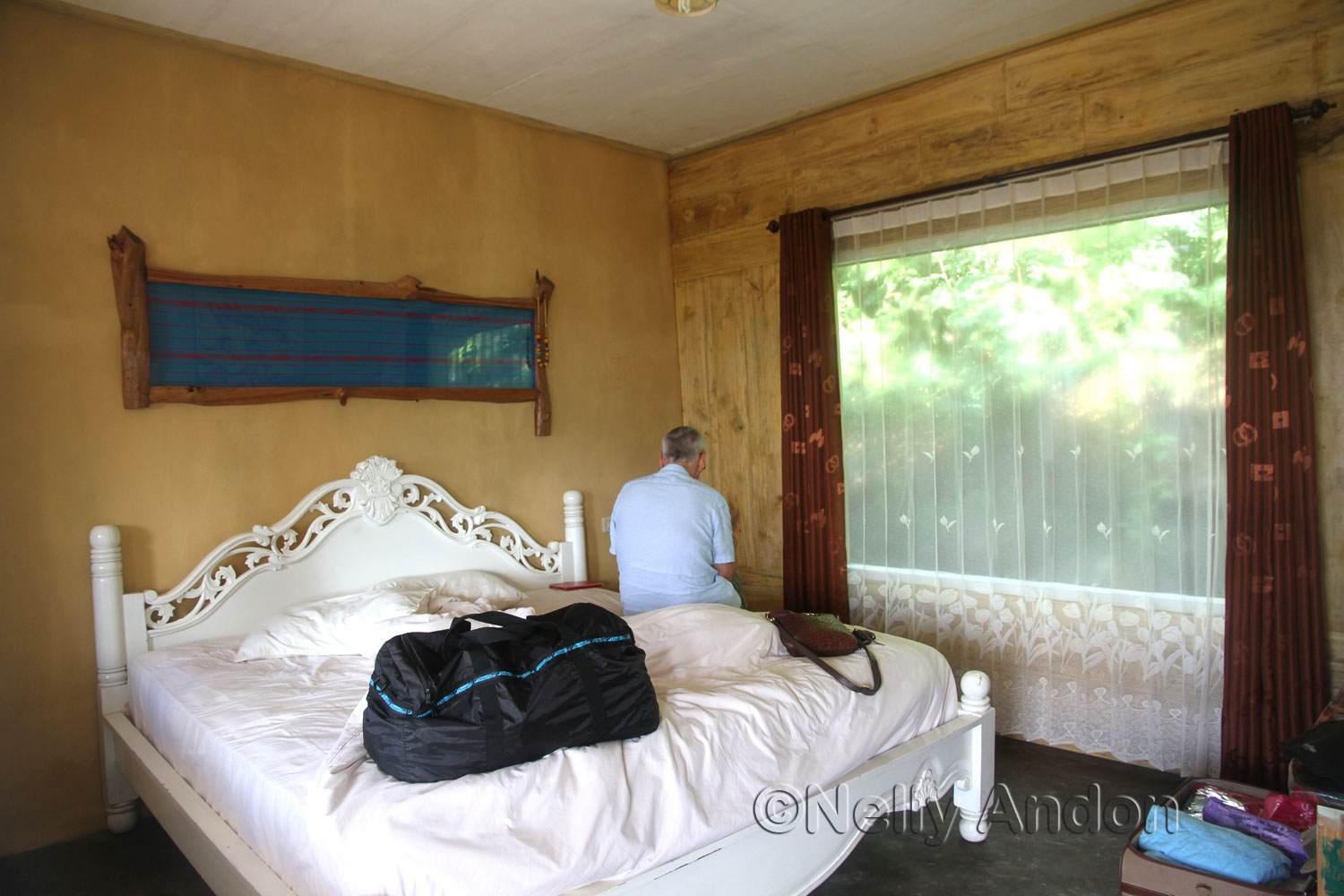
We were shown to our room, a very large double bedroom, with a rather mishmash decor, some decor looked very American, some look modern like a design you might see in Instagram or Pinterest images. The room was fairly clean but smells very damp and musty, perhaps this could be the effect of the forest surrounding, or perhaps, we were just unlucky to get a room which had not been occupied for weeks. Anyway, that wasn’t important as we only stayed one night here. We slept like a log and was ready for our adventure of Bena Village.
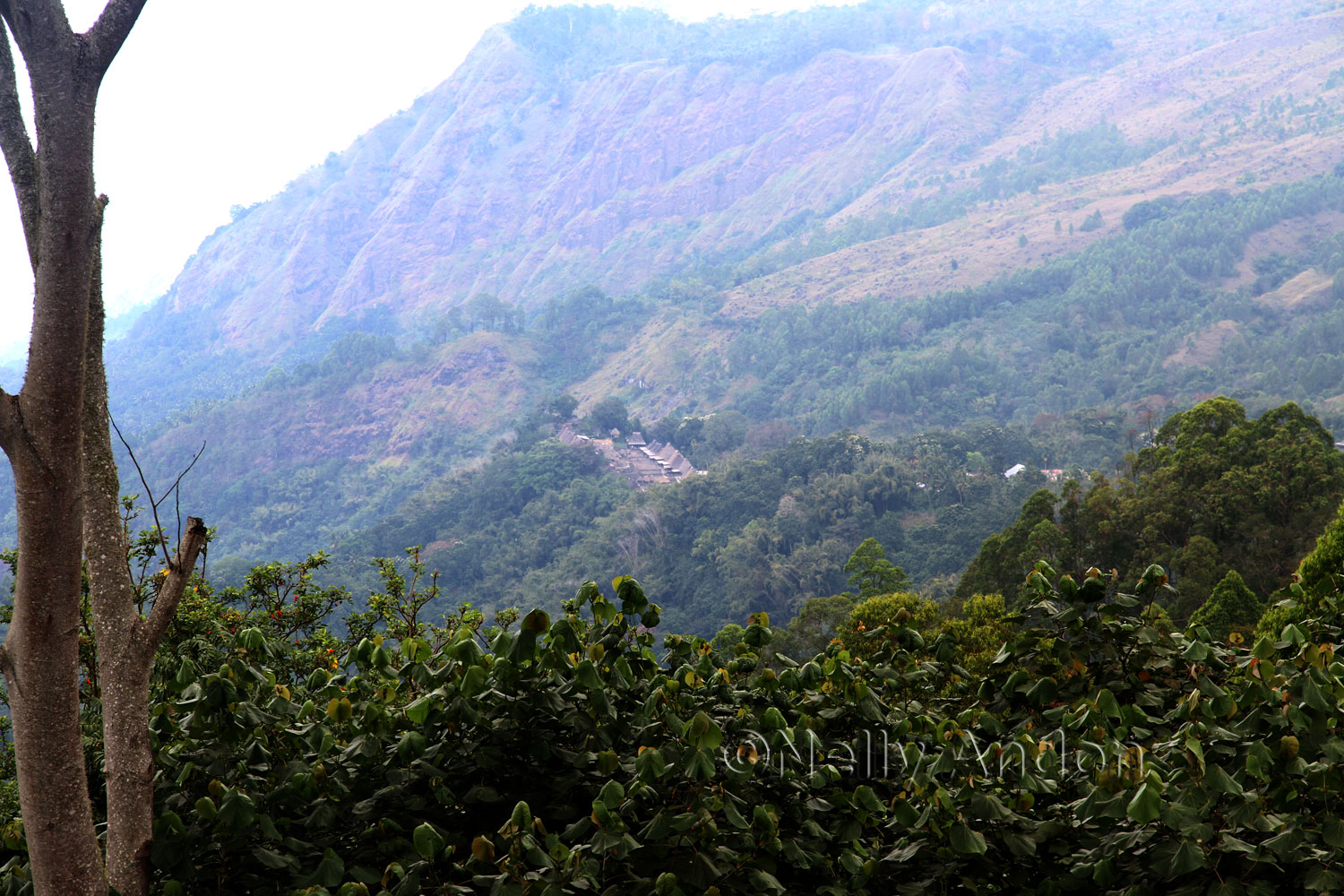
After breakfast, we packed our bags and headed to Bena. Bena Village is located several miles away from Manulalu hotel, on the bottom of the mountain. There several traditional Ngada villages around here, but Bena is one of the largest, oldest and most visited by tourists. Geographically, Bena comes under Tiworiwu village, part of Jerbu’u district of Ngada region. Nearby traditional villages can be found here, such as the Luba village, Batakengo and Sarabawa. Bena was named after the oldest man who helped lay the foundation of this village, called Mr Bena. The village is shaped like a boat when viewed from the highest level. When you are in Bena, do climb up to the top of the village to enjoy this view and the surrounding area. There are 45 houses here, and a few more traditional houses on the nearby Sarabawa village, which is located just a few hundred meters away from Bena.
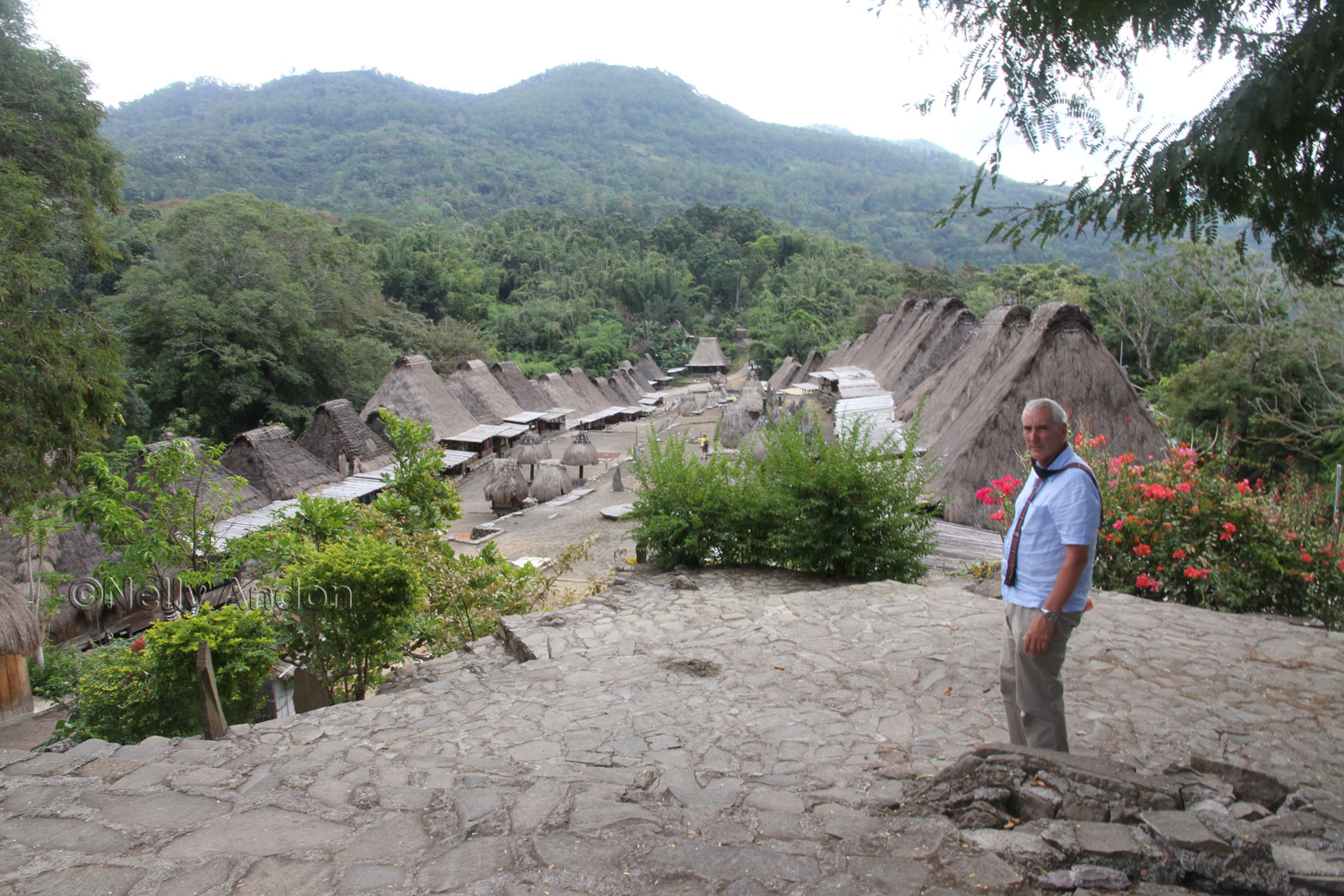
Most people here believe in Catholicism, but they also strongly believe in their traditional believes that their ancestors are always watching over them, and you can see some evidence of this through their preservation of traditional culture through ceremonial events and rituals around the village. On this village you can find traditional burial ground and Christian burial ground, depicting the truth about their beliefs.
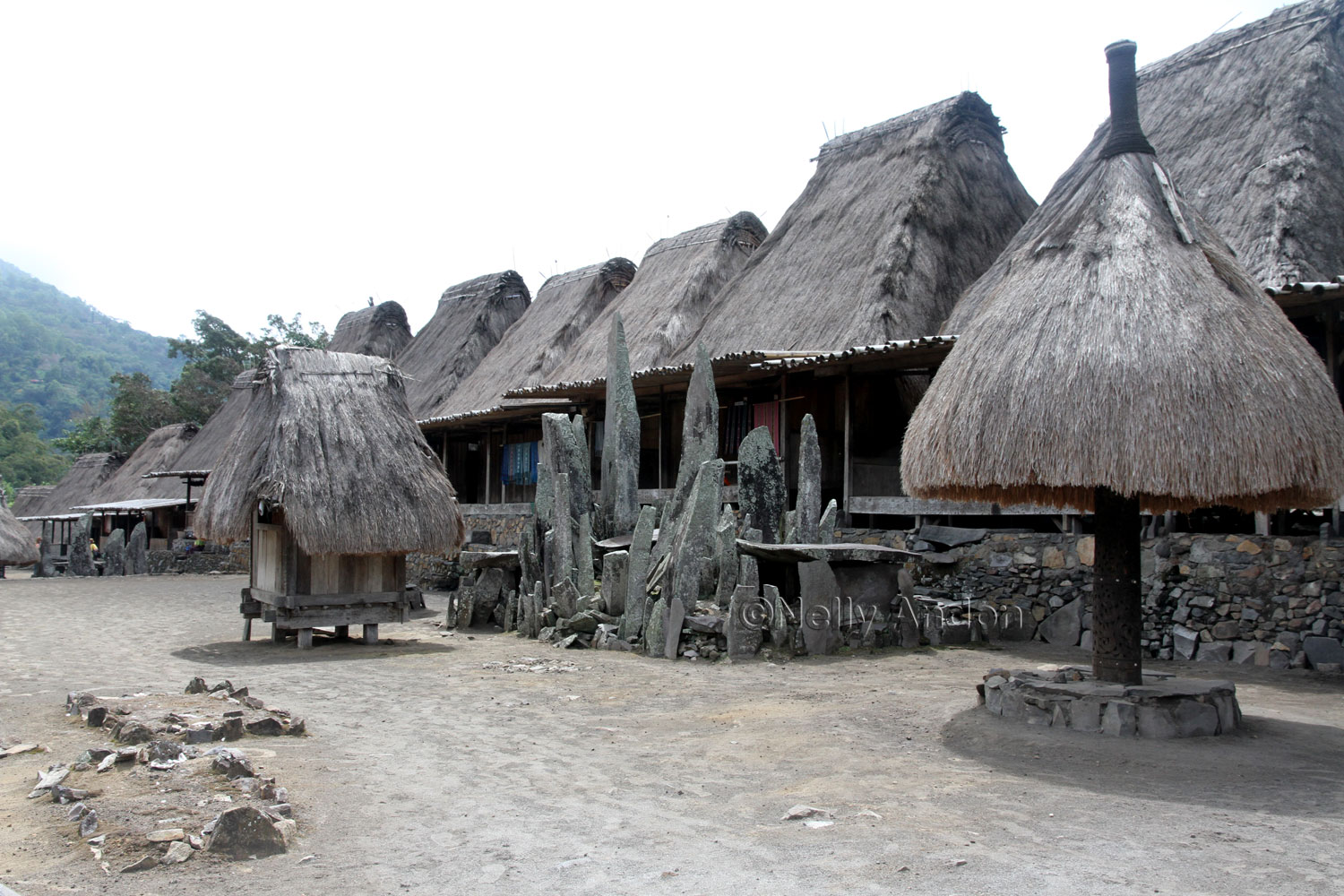
Traditional burial ground (above)
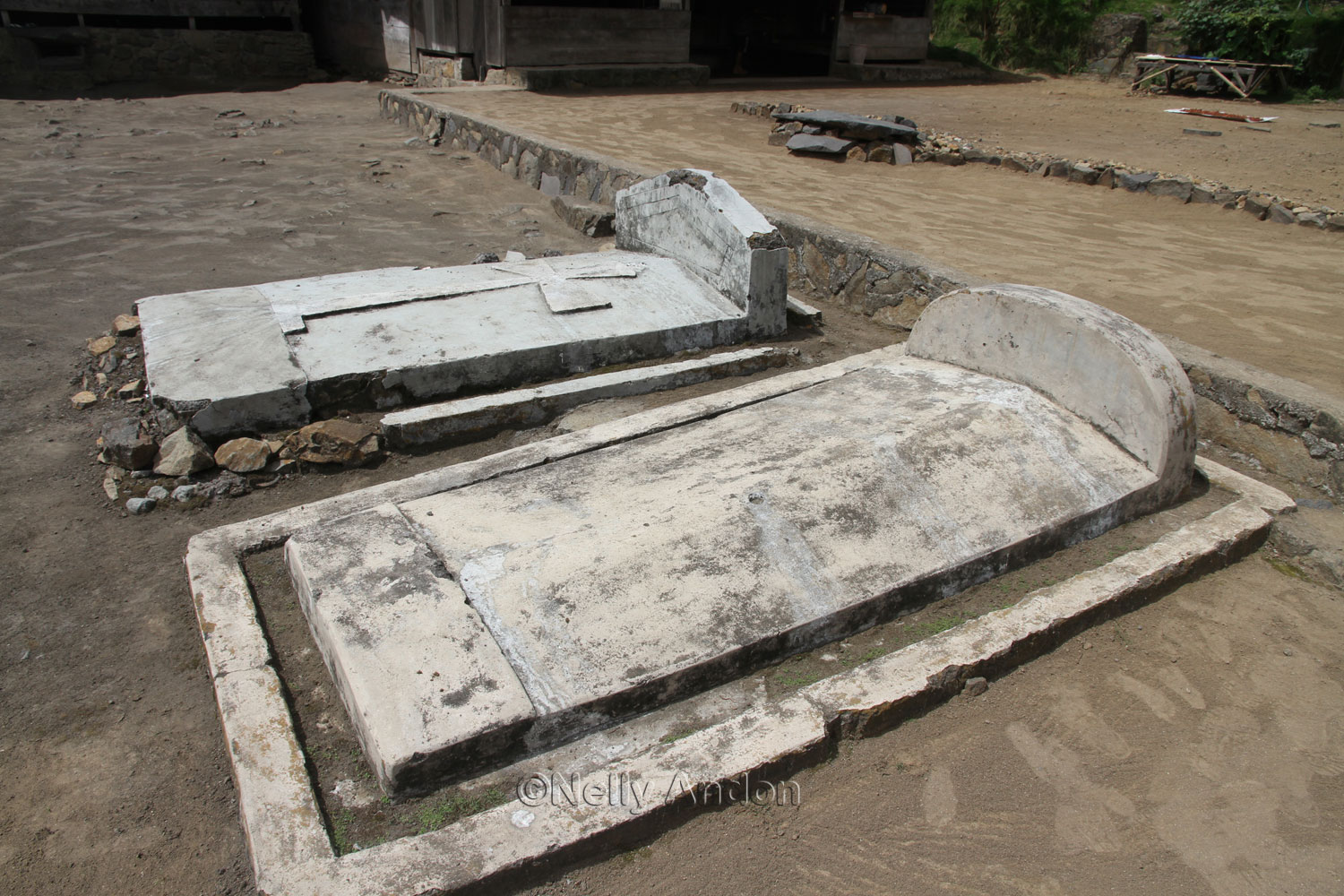
Christian burial ground (above)

Buffalo horns, evidence of offerings made to their ancestors.
The main house that own by each of the clan living in this village called “Sao Meze”,each of these houses is decorated with items with their symbolic meanings. The symbol used to represent their female ancestors called Sao Saka Pu’u, a symbol made from a bamboo stick with a small coconut on the base, and installed in each corner of the roof of these houses, resembling hairpins. See the top end of the roof of the houses, on the image below.
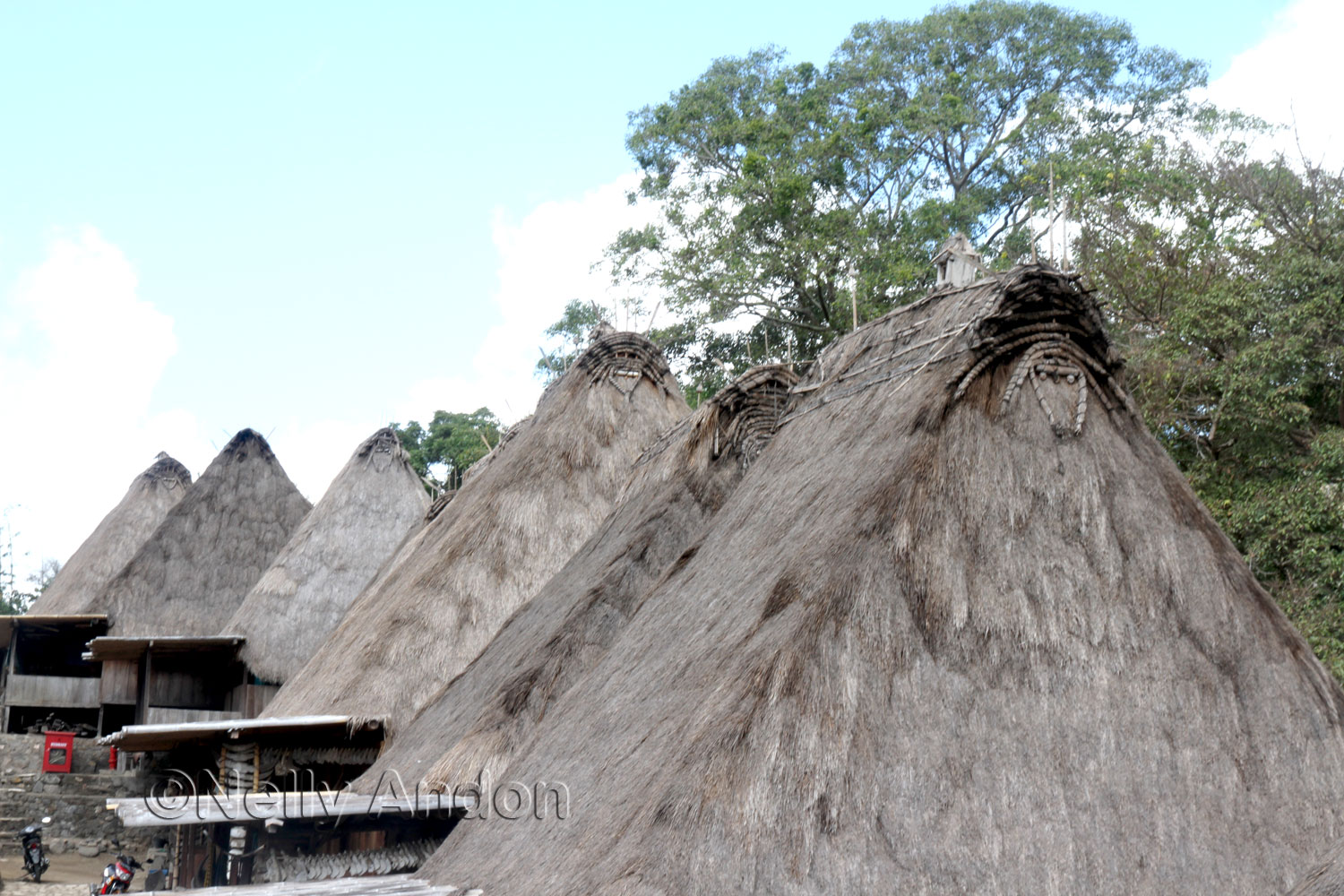
The symbol to represent their male ancestors is called Sao Saka Lobo. The symbol is made in a form of male statuette carved from solid wood and wrapped in palm fibre. This figure is installed on top of the Sao Meze roof, holding a machete and a spear. See the image below.
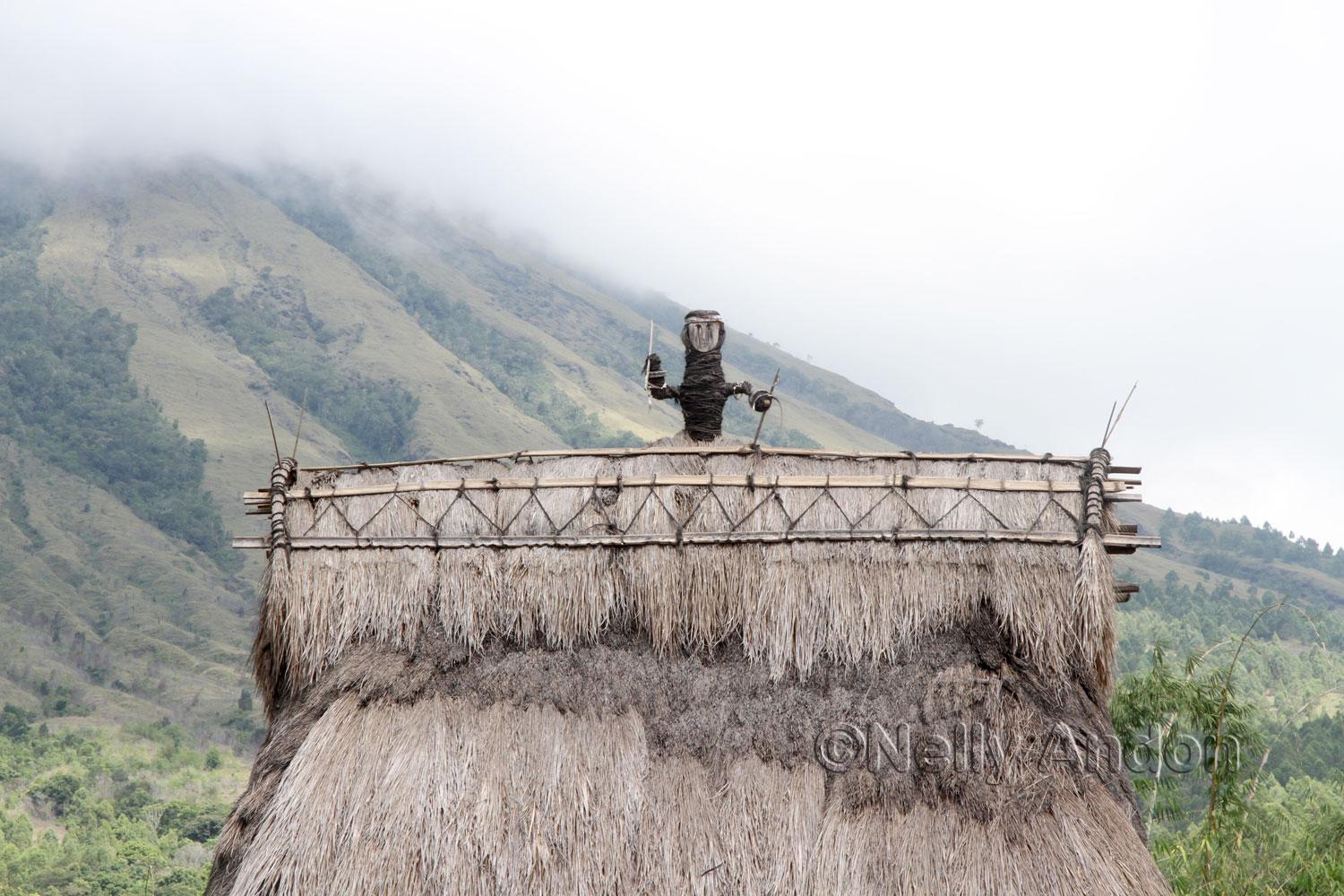
Some of the houses here are highly decorative with beautiful wood carving, in animal images. These animal symbols are also used as philosophical symbols of their traditional woven textiles. Houses with wood carvings are usually Sao Meze houses which have reached the standard requirements to display such arts.

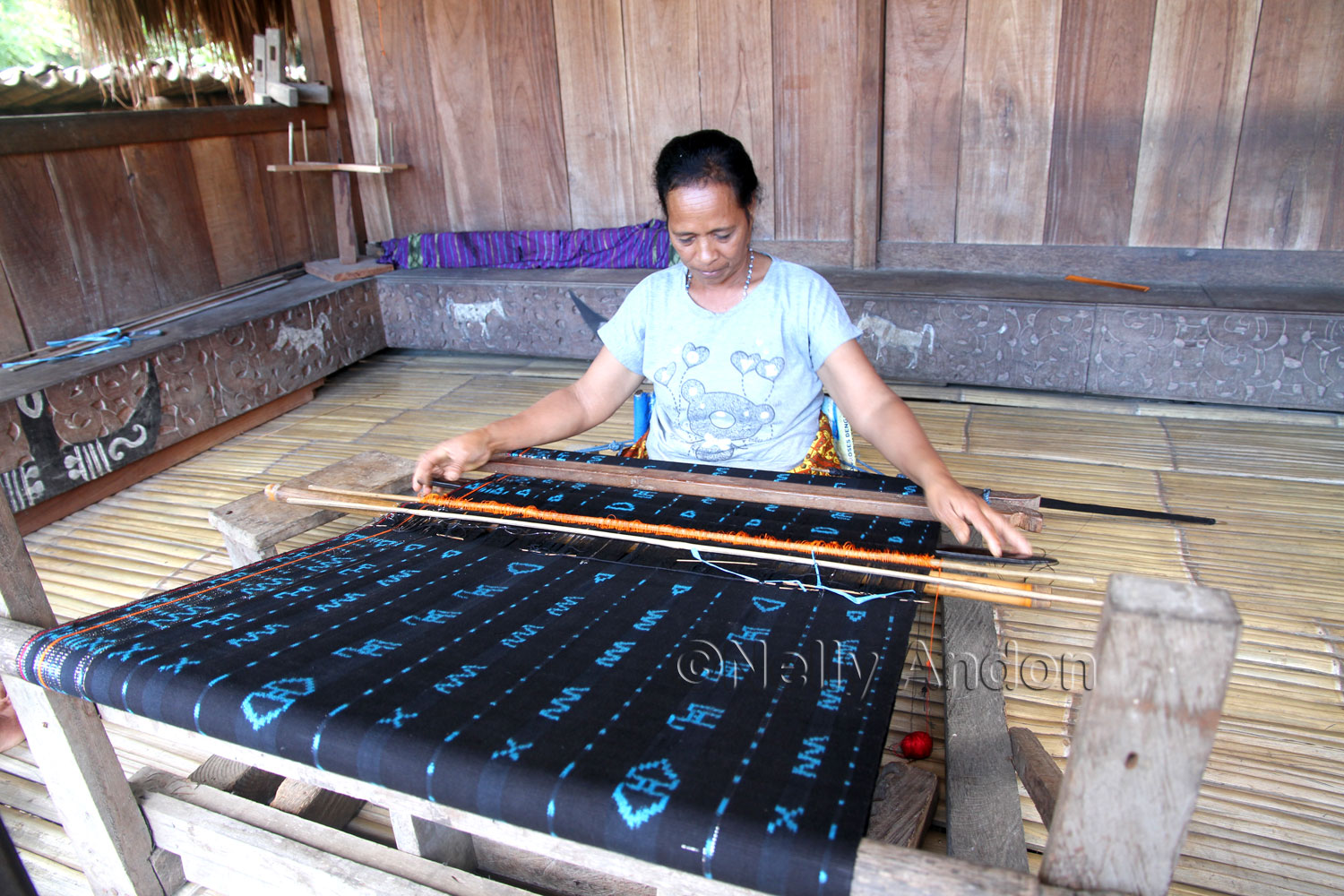
You may find images of chicken Cockrell and horses carved into the panels of these houses, each of these animals represent a symbolic meaning.
- The chicken symbolises greatness and graciousness, as they can move from places to places, and from lower ground to higher levels. In human term, our ability to reach higher position and statuses in the society.
- The Cockrell symbolises the beginning of life, in human term our ability to start each day with good commitment and devotion to all things we do around us.
- The Horse symbolises strength, power, in human term our ability to work hard, we must work hard so that we can achieve a good and prosperous life.
I was very lucky to have captured some amazing images from a living room of one of the Sao Meze houses, belong to one of the weavers I chatted to. You can see on this image, the carving of the chicken are located on the higher level above the Cockrell and the horses.
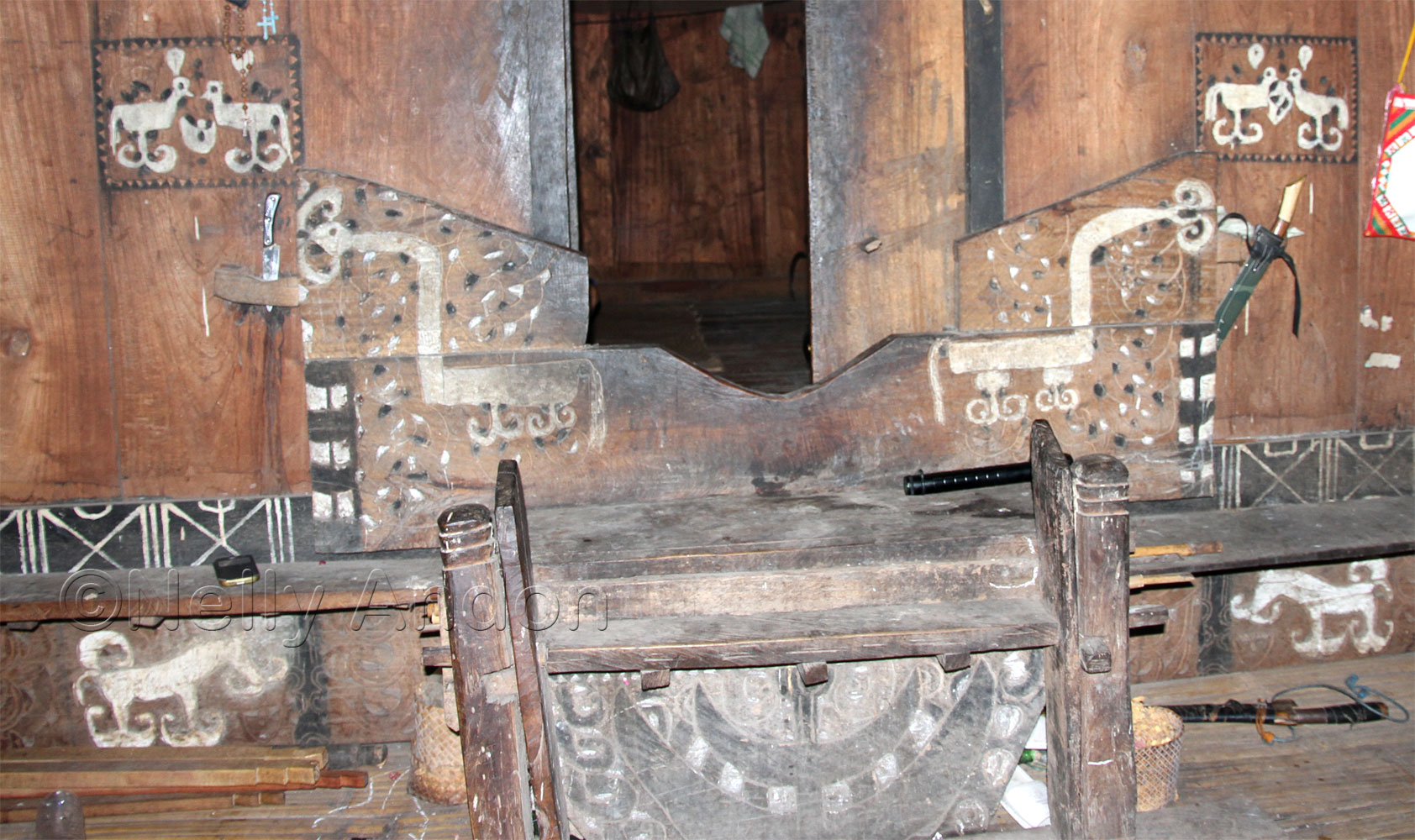
Our visit to Bena was truly memorable. I have learned so much about the Nngada culture and tradition just within a very short time. I love the textiles of this region too. Although currently Bena producing some very modern looking textiles, a lot of their textiles, particularly their tube sarong, are still produced in their original dark or subtle colours. I hope to return to Bena again soon, to explore the Ngada region a little closer and to meet more weavers of this region.
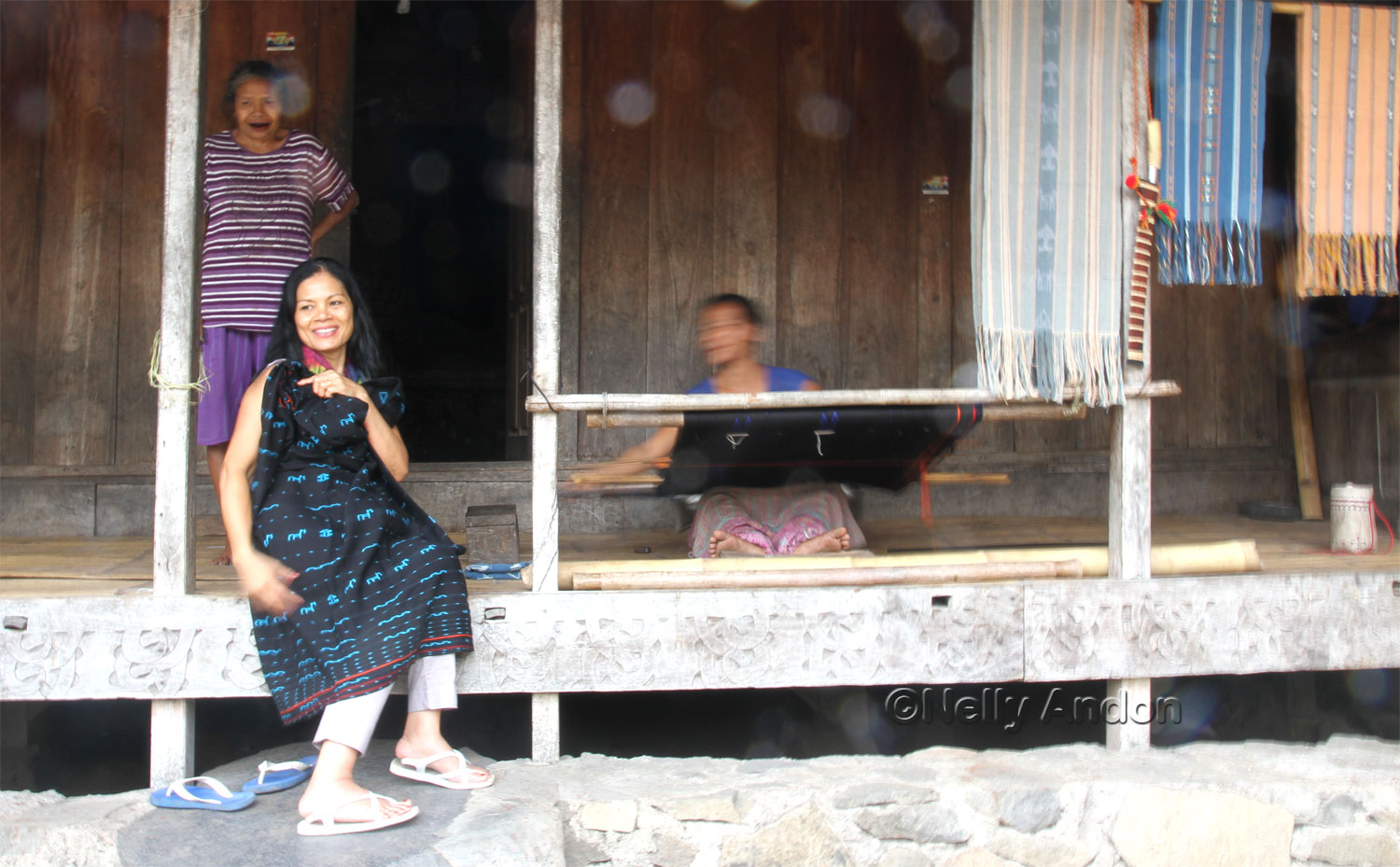
If you are interested to travel to Bena with me, do not hesitate to contact me. Thank you for your visit today.
Salam Wastra,
Nelly Andon
